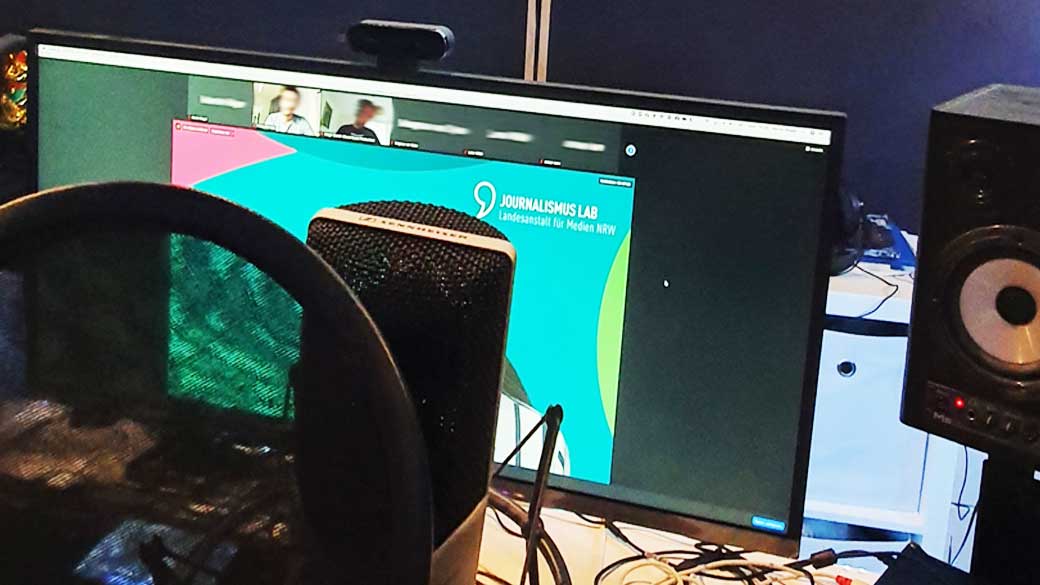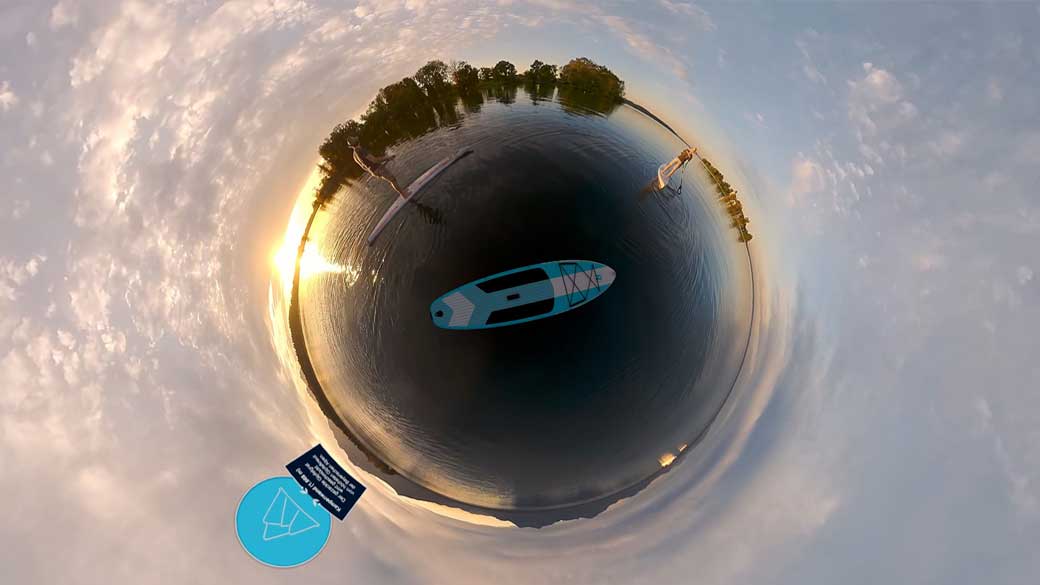
Audiocamp: What is Immersive Audio? – Bootcamp
About the Journalism Lab Event Audiocamp
We are happy to invite you again to the Journalism Lab Audiocamp on 1 September 2021. We want to give people from the audio industry space for exchange and discussion at eye level.
We already have exciting session proposals, are looking forward to a networking platform provided by the Media Commission of the Media Authority of North Rhine-Westphalia and can also present the results of the “On Track” study series on mobile audio use. Be there!
Immersive Audio Fundamentals
Understanding the Basics of Immersive Sound and its playback system
Immersive audio, also known as spatial audio, is revolutionizing the way we experience sound. This cutting-edge format creates a three-dimensional sound field that envelops the listener from every angle, simulating the natural way we hear the world around us.
Our hearing apparatus is inherently immersive, allowing us to perceive sound cues from any direction. Just as our eyes help us see, our ears help us understand the location of sound sources by calculating differences in the time and amplitude of sound signals. This auditory experience is designed to mimic real-world sound perception, making it an integral part of modern audio technology.
Key Technologies and Their Impact for new experiences
At the heart of immersive audio systems are key technologies like object-based audio, which treats each sound source as an independent entity with its own spatial characteristics. This approach offers greater flexibility in audio placement and movement within the sound field.
Technologies such as Dolby Atmos, DTS:X, and Auro-3D further enhance the immersive experience by supporting a wide range of speaker configurations, including overhead speakers. These advancements enable the creation of realistic soundscapes that enhance storytelling and bring a new level of realism to audio productions.
The impact of these technologies is profound, allowing listeners to experience sound in a way that closely mirrors real life.
Martin Rieger is there, of course, with 3D Audio
There’s a breath of fresh air for the ears: Spatial 3D Audio is experiencing a huge buzz due to Apple’s new releases, the Sony Playstation and about 8D Audio videos on YouTube. However, this is not just hype, but heralds the next evolutionary stage of listening. From our natural environment, we humans are used to experiencing our surroundings in three dimensions.
Commercially available headphones now offer the possibility of experiencing 3D audio technology from home. But how can 3D audio become the future? By accurately recreating the auditory environment, 3D audio enhances the listening experience, making it more immersive and realistic.
I’ll tell you about what there is to know, how it all sounds and what exciting applications there are and will be in the future.
I’m holding the session together with the automotive experts from Binaurics and I’m looking forward to shedding light on the topic of 3D audio from a technical and creative content perspective.

Spatial Audio and Dolby Atmos
Exploring Advanced Audio Technologies
Spatial audio takes immersive listening to the next level by simulating a binaural picture of a multi-channel audio experience. It aims to deliver through two channels what the human ear would naturally hear in a fixed listening position within an immersive audio system.
Dolby Atmos, a leading sound technology, enables the creation of 3D/spatial audio, allowing sound engineers to position tracks in a three-dimensional space. This technology is not only accessible but also versatile, as Atmos-enabled mixes can be created using regular headphones within the Logic Pro X environment, eliminating the need for expensive speakers.
Moreover, these mixes can be shared and uploaded to streaming services like Apple Music, making immersive audio more accessible to a broader audience. This democratization of advanced audio technology is transforming how we experience sound, making it an integral part of modern auditory experiences.
Follow-up report to build access to knowledge
Here is the whole recap by Journalismus Lab and full day Audiocamp. Susanne Lang was even kind enough to write a report on the immersive 3D audio talk, thanks for that!
Immersive 3D Audio. What does the revolution of hearing sound like?
Humans naturally hear in three dimensions. Digital 3D audio can now imitate this more and more. What opportunities does the technology offer? This was discussed by sound engineers Martin Rieger from VRTonung, Detlef Wiese and Hauke Krüger from Binaurics at the Audiocamp. The role of the music producer, such as Hans-Martin Buff, is crucial in creating these immersive audio experiences.
Sometimes the digital revolution leads back to the origin. 3D audio or immersive audio is such a revolution, which enables spatial listening via special microphones and digital technology. Recording engineers, like Hans-Martin Buff, play a significant role in implementing these advanced audio techniques.
“The three-dimensional audio experience corresponds to our natural listening habit,” Martin Rieger explained at the Audiocamp session on 3D audio. Sound designers are also essential in this field, contributing their expertise to multimedia projects and sound installations.
People automatically hear all sounds in a room, not just a separated voice as is usual with stereo transmissions. Together with audio experts Detlef Wiese and Hauke Krüger from the production company Binaurics, Rieger presented the possibilities of the new technology in the session – and what better way than with a live experiment.
3D Audio for the immersive experience of being there
The perceived closeness at a real distance was particularly valuable for pupils who had purely online or alternate lessons for long periods during Corona-related lockdowns. This was the conclusion reached by sound engineer Hauke Krüger, who had started an experiment with 3D audio in his children’s classrooms during homeschooling.
FlOhrin, an immersive avatar, was set up in the classrooms on site at the school. It had the shape of a human head and was equipped with a camera and microphones that guaranteed a three-dimensional listening experience.
“Flohrin was the eyes and ears for all the pupils who followed the lessons from home,” said Krüger.
The children took a more active part in the events and were able to concentrate better and longer, said Krüger. Following the school experiment, Krüger had also tested the technology in a live streaming from the church – with similar results:
The participants at home had the feeling of being there on the spot. So the conclusion of the sound experts was obvious where 3D technology could be used in the future: in the broadcasting of events, concerts, sporting events and discussions, but also in cars, in the production of commercials and audio books as well as in the gaming industry.

The potential for future spatial audio productions
As beautiful as this all sounds in the truest sense of the word, there was one objection from the audience: the dummy head is not really new, Philipp Reinartz noted, the technology dates back to the 1920s. “What exactly is the potential?” he asked.
For Martin Rieger, the answer clearly lies in the digital possibilities. “With new spatialisers, the sound can be brought into virtual space, so that the sound field moves with it when the sound source moves.”
Rieger had a convincing example of this: a commercial for the Chiemsee tourism region. In it, a man speaks as he rides across the lake on a standup paddleboard. With digital immersive technology, the sounds of the environment change parallel to the head movements of the man on the board.
This also eliminates the need for headphones, which are still necessary for the pre-stage of immersive audio, the so-called binaural audio as in Kunstkopf Flohrin.

Q&A
Detlef Wiese added that fundamentally, however, people’s accessibility has also changed.
“Everyone now owns headphones and uses them every day.”
However, since hardly anyone owns a dummy head, another question arose for Valerie Wagner at the end of the session: “What do you need to produce a 3D podcast?” Definitely not expensive equipment, Martin Rieger assured her. More problematic than the hardware on offer, he sees the rare use of the technology.
Here are more innovations“There is hardly any well-made 3D audio content because few know what works better here than with stereo,” said Rieger. But that, too, is likely to change soon.